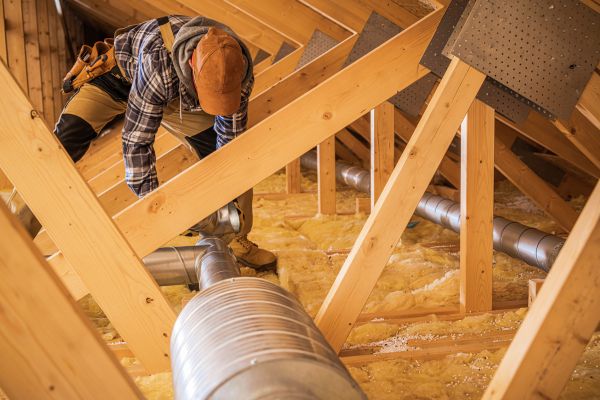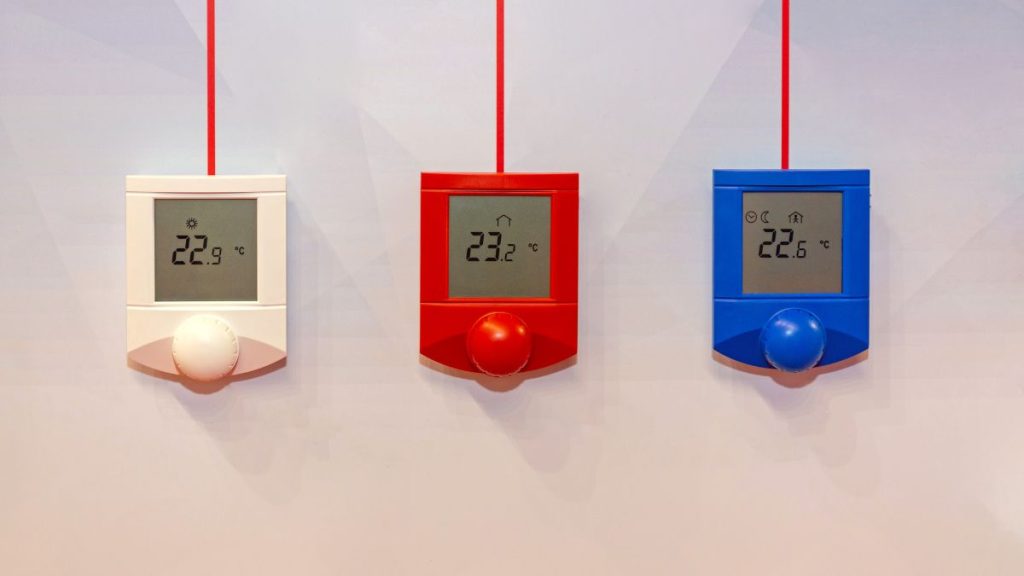Imagine setting the right indoor temperature that suits everyone. Honestly, that is as close to the definition of a near-impossible task as you can get.
Each of us may have individual cooling and heating needs and there is no one comfortable indoor temperature for everyone. To make things worse, some areas in your room may be hotter or colder than others.
The easy way to end these never-ending temperature battles in your home is through HVAC zoning. With a multi-zone HVAC system, you can control the temperature in different rooms separately. This reduces the problem of uneven heating or cooling and makes it more comfortable for all the occupants.
So, what is aircon zoning?
Let’s find out.
How Does a Zoned HVAC System Work?

Zoning can be done in multiple ways in a large house. The idea is to split the total area into different zones or clusters for more precise temperature control. One of the easiest ways is to use multiple thermostats on different floors for controlling the temperature more effectively. Installing multiple split systems in different areas of your home is also a form of zoning.
In a ducted system, dampers are used in specific areas to control the flow of air into these zones. The dampers get opened or closed through individual thermostats in each zone. While the dampers in one duct open up to cool a particular room, the ones in the other rooms can remain closed.
You can even do it in modern HVAC systems using a smartphone app. The thermostats are connected to a central HVAC unit through a control panel. The unit is switched on and off as you need it, when you need it.
Not every home will need temperature zoning, especially smaller ones. But, most large houses have hot or cold spots or rooms that are too hot or too cold.
If your bedrooms are upstairs and facing north, they will need more cooling during the evening. On the other hand, the living room on the ground floor may not receive direct sunlight and remains cooler. It makes perfect sense to set two or more different zones in the house for optimised temperature control and better energy efficiency.
In most cases, if a house has one or more of the following features, you can consider adding zones to the HVAC system.
- Multiple floors with a large area or multiple wings
- A basement
- A sunroom
- An attic living space
- High ceilings and large windows
While there are no limitations on the number of zones for a home, two to four zones work in most cases. Advanced systems can handle even up to eight or more zones.
Ducted vs Ductless HVAC Zoning
The fact is, not all homes have the space to set up a ducted aircon system. Some old houses with structural limitations may not be suitable for ductwork. And let’s admit it – installing ducts is a cumbersome process.
But that doesn’t mean you need to give up on zoning just because your home is smaller or older. Ductless HVAC zone control systems can save the day here! A ductless system can connect multiple indoor air handling units for every zone to a single outdoor compressor unit. You can choose wall-mounted, floor-mounted, or ceiling-recessed indoor units to match your interiors. Each unit is independently controlled to maintain specific temperatures.
For example, the family room, kitchen, and hallway can be one zone. The bedrooms that are mostly occupied at night get separated into two or more zones. These can be switched off during the day when the rooms are not in use.

In ducted systems, air leakage can happen through the gaps in the duct panels. Since ductless systems are free from such leakages, there is less chance of energy loss. Besides, ductless systems are more durable and are great for improving indoor air quality.
Which, by the way, doesn’t mean they aren’t prone to becoming a germ breeding ground if you don’t maintain them regularly.
Benefits of a Zoned HVAC System
It’s not just about convenience! Zone heating and cooling have multiple advantages. Take a look.
- With the air conditioning system running only in zones where it is needed, the system helps save energy and reduce running costs. Some studies suggest this can be between 21 and 42% in a year. Advanced units have motion sensors that can detect human movement in a zone and operate smartly.
- Zoning ensures better temperature uniformity in a house. Besides neutralising hot and cold spots, it reduces the impact of high ceilings and large windows. In other words, HVAC zoning makes your home’s interior more comfortable.
- In a workplace, zoning allows temperature or climate control based on the type of work. Employees doing more physical activities will need temperature settings different from the sedentary ones doing office tasks. Zoning helps ensure thermal comfort throughout the workspace.
How Much Does HVAC Zoning Cost?
If you are wondering if it is possible to add zones to an existing HVAC unit, the answer is yes.
This can be easily done by adding extra units and the other necessary components. But, for some homes, this may not be possible due to various limitations and the condition of the existing system.
To start with, you can consider each room as one zone. However, it is best to get advice from a professional who can make accurate suggestions based on the heating and cooling loads. Sizing is, after all, always one of the most important concerns in HVAC.
Coming to the expenses, for each additional cooling zone, you will need an indoor unit and add to an outdoor unit. Other controls and parts will include the refrigerant lines, wiring, and electrical accessories. Your home may need a new 240V circuit to accommodate the additional units. On top of that, there will be labour charges.
Remember how we mentioned that installing ductwork is not so simple? Well, estimating the cost of ducted systems is also complicated as it depends on the size and length of the ducts. It is best to consult an HVAC professional who can calculate and prepare a cost estimate.
Admittedly, HVAC zoning is an expensive process and the cost can be as high as $15,000 for large homes with multiple zones. But, when you consider the advantages and long-term cost savings, you will find that zoned HVAC systems make a lot of financial sense too.
Frequently Asked Questions
Is HVAC zoning worth it?
Even though the upfront costs of HVAC zoning are high, it’s the single best way to ensure thermal comfort in many homes. Plus, it can also help reduce energy bills. Overall, used in the right situation, HVAC zoning is worth it, especially in the long run.
How does a 2-zone HVAC work?
Like its name suggests, a 2-zone HVAC system has two separate zones with independent temperature control for each. This can be done through ducts or by ductless indoor units.
How do zone dampers work?
Zone dampers open or close to control the flow of air into a zone. The process is usually controlled by a wireless controller or a thermostat. However, if you’re more of an old-school type or have an older system, the dampers can also be manual. You can toggle the manual ones between open and closed by turning a lever. It goes without saying that manual dampers are also cheaper!
Can a heat pump have 2 zones?
A multi-zone HVAC heat pump can connect with 2 or more indoor units. Each zone has individual temperature set points and communicates with the external unit for optimised heating.


